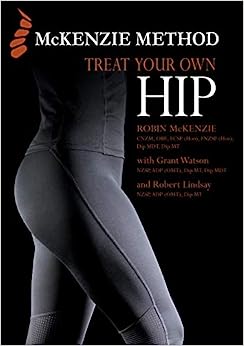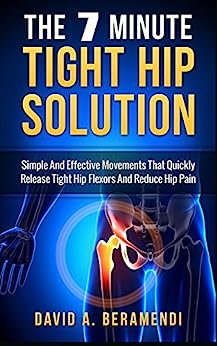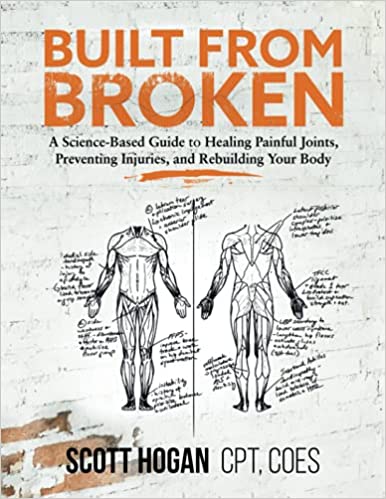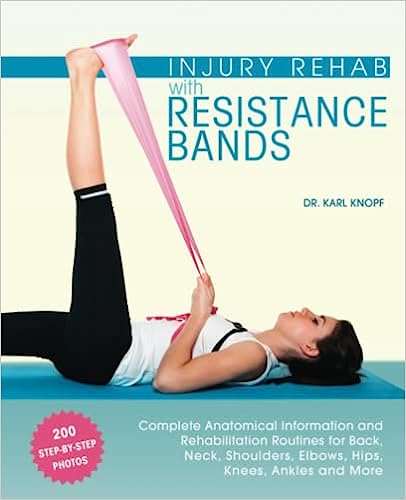Are you experiencing stiffness or limited range of motion in your hips? Do you want to improve your mobility and enhance your overall physical performance? Hip mobility exercises are the key to unlocking the full potential of your hips and ensuring optimal movement. In this article, we will explore the importance of hip mobility, discuss the benefits of incorporating hip mobility exercises into your fitness routine, and provide you with a comprehensive guide to the top 15 hip mobility exercises. So, let’s dive in and discover how you can enhance your hip mobility for a healthier and more active lifestyle.
1. Introduction
Proper hip mobility is crucial for everyday activities and physical performance. Whether you’re an athlete, a fitness enthusiast, or someone seeking to improve their overall mobility, focusing on hip mobility exercises can significantly benefit you. By incorporating targeted exercises into your fitness routine, you can enhance your range of motion, reduce the risk of injuries, and improve your overall movement quality.

Treat Your Own Hip
2. Understanding Hip Mobility
Hip mobility refers to the ability of the hip joints to move freely through their full range of motion. It involves the coordination of various muscles, ligaments, and tendons surrounding the hip joint. Factors such as sedentary lifestyles, prolonged sitting, and lack of exercise can lead to decreased hip mobility over time. By addressing and improving hip mobility, you can alleviate hip tightness, enhance athletic performance, and prevent imbalances in your body.
3. Benefits of Hip Mobility Exercises
Incorporating hip mobility exercises into your fitness routine offers numerous benefits, including:
a) Enhanced Range of Motion:
Hip mobility exercises target the muscles and ligaments surrounding the hip joint, helping to improve flexibility and increase your range of motion. This increased range of motion translates to improved performance in activities like running, jumping, and squatting.
b) Injury Prevention:
Poor hip mobility can lead to compensatory movements and imbalances, increasing the risk of injuries in the lower back, knees, and ankles. Regularly performing hip mobility exercises can help correct these imbalances, reducing the risk of injuries and improving overall movement mechanics.
c) Improved Posture and Alignment:
Strong and mobile hips contribute to better posture and alignment. By addressing hip mobility, you can alleviate muscle imbalances that may contribute to poor posture and lower back pain.
d) Enhanced Athletic Performance:
Athletes in various sports, such as soccer, basketball, and martial arts, rely on hip mobility for optimal performance. By incorporating hip mobility exercises into their training regimen, athletes can improve agility, speed, and power.
e) Reduced Joint Pain:
Hip mobility exercises can alleviate joint pain and discomfort associated with conditions like arthritis and bursitis. By strengthening the surrounding muscles and improving joint stability, you can minimize pain and improve your overall quality of life.

Tight Hip Flexors: The 7 Minute Tight Hip Solution:Simple and Effective Movements That Quickly Release Tight Hip Flexors And Reduce Hip Pain (Hip replacement … mobility exercises, hip flexor exericises)
4. Hip Mobility Exercise 1: Hip Circles
To perform this exercise, follow these steps:
- Stand with your feet hip-width apart, hands resting on your hips.
- Begin by making circular motions with your hips, moving clockwise.
- Gradually increase the size of the circles while maintaining a controlled movement.
- After several repetitions, switch to counterclockwise circles.
- Perform 10-15 circles in each direction.
Hip circles help to lubricate the hip joints, improve hip mobility, and warm up the surrounding muscles.
5. Hip Mobility Exercise 2: Glute Bridges
To perform this exercise, follow these steps:
- Lie on your back with your knees bent and feet flat on the floor, hip-width apart.
- Place your arms by your sides, palms facing down.
- Engage your core and glute muscles, then lift your hips off the ground until your body forms a straight line from shoulders to knees.
- Hold the bridge position for a few seconds, squeezing your glutes.
- Slowly lower your hips back to the starting position.
- Repeat for 10-12 repetitions.
Glute bridges activate the glute muscles and promote hip extension, improving hip strength and mobility.
6. Hip Mobility Exercise 3: Deep Squats
To perform this exercise, follow these steps:
- Stand with your feet slightly wider than hip-width apart, toes pointing slightly outward.
- Keeping your chest lifted and core engaged, lower your body into a deep squat position by bending your knees and pushing your hips back.
- Ensure that your knees are tracking over your toes and your heels are on the ground.
- Hold the deep squat position for a few seconds, then slowly rise back up to the starting position.
- Repeat for 8-10 repetitions.
Deep squats improve hip mobility, activate the glutes and quadriceps, and enhance overall lower body strength.

Built from Broken: A Science-Based Guide to Healing Painful Joints, Preventing Injuries, and Rebuilding Your Body
7. Hip Mobility Exercise 4: Lunges
To perform this exercise, follow these steps:
- Stand with your feet hip-width apart, hands on your hips or at your sides.
- Take a step forward with your right foot, keeping your torso upright.
- Bend both knees to lower your body until your front thigh is parallel to the floor, and your back knee is hovering just above the ground.
- Push through your front heel to return to the starting position.
- Repeat on the other side, alternating legs for 10-12 repetitions.
Lunges target the hip flexors, glutes, and hamstrings, promoting hip mobility and stability.
8. Hip Mobility Exercise 5: Spiderman Walks
To perform this exercise, follow these steps:
- Start in a high plank position with your wrists directly under your shoulders and your body in a straight line.
- Bring your right foot forward and place it next to your right hand, keeping your left leg extended.
- Pause briefly, then return your right foot to the starting position.
- Repeat on the other side, alternating legs for 10-12 repetitions.
Spiderman walks activate the hip flexors and improve hip mobility, particularly in the frontal plane.
9. Hip Mobility Exercise 6: Fire Hydrants
To perform this exercise, follow these steps:
- Begin on all fours, with your hands under your shoulders and your knees under your hips.
- Keeping your core engaged, lift your right knee out to the side, maintaining a 90-degree angle.
- Pause briefly at the top, then lower your knee back down.
- Repeat on the other side, alternating legs for 10-12 repetitions.
Fire hydrants target the hip abductors and improve hip mobility, especially in lateral movements.
10. Hip Mobility Exercise 7: Pigeon Pose
To perform this exercise, follow these steps:
- Start in a high plank position.
- Bring your right knee forward and place it behind your right wrist, with your shin angled diagonally.
- Extend your left leg behind you, keeping your hips square.
- Lower your upper body onto your forearms or rest your forehead on the ground.
- Hold the pose for 30 seconds to 1 minute, then switch sides.
Pigeon pose is a yoga stretch that helps open up the hips, relieve tightness, and improve hip mobility.
11. Hip Mobility Exercise 8: Standing Hip Abduction
To perform this exercise, follow these steps:
- Stand upright with your feet hip-width apart, holding onto a stable surface if needed.
- Lift your right leg out to the side as far as comfortable, while keeping your torso upright and stable.
- Hold the position for a few seconds, then lower your leg back down.
- Repeat on the other side, alternating legs for 10-12 repetitions.
Standing hip abduction targets the hip abductors, improving hip mobility and stability in a weight-bearing position.

Tight Hip, Twisted Core: The Key to Unresolved Pain – by Koth, Christine and Pimas, Masha (Paperback, Aug 13, 2019)
12. Hip Mobility Exercise 9: Hip Flexor Stretch
To perform this exercise, follow these steps:
- Kneel on your right knee, with your left foot placed flat on the floor in front of you.
- Keeping your torso upright, gently lean forward, pressing your hips forward.
- You should feel a stretch in the front of your right hip.
- Hold the stretch for 30 seconds to 1 minute, then switch sides.
The hip flexor stretch helps alleviate tightness in the hip flexors and improves hip mobility for activities like running and lunging.
13. Hip Mobility Exercise 10: Leg Swings
To perform this exercise, follow these steps:
- Stand next to a wall or sturdy object for support.
- Shift your weight onto your left leg and swing your right leg forward and backward in a controlled manner.
- Swing your leg 10-12 times, then switch to the other leg and repeat.
Leg swings improve hip mobility and dynamic flexibility, activating the hip flexors and extensors.
14. Hip Mobility Exercise 11: Hip Thrusts
To perform this exercise, follow these steps:
- Sit on the ground with your back against a stable surface, knees bent, and feet flat on the floor.
- Place a resistance band around your thighs, just above your knees.
- Engage your glutes and push through your heels to lift your hips off the ground until your body forms a straight line from knees to shoulders.
- Squeeze your glutes at the top, then lower your hips back down.
- Repeat for 10-12 repetitions.
Hip thrusts target the glute muscles and improve hip extension, promoting hip strength and mobility.
15. Hip Mobility Exercise 12: Butterfly Stretch
To perform this exercise, follow these steps:
- Sit on the floor with your knees bent and the soles of your feet touching each other.
- Hold onto your ankles or feet, allowing your knees to drop towards the ground.
- Gently press your elbows against your inner thighs to deepen the stretch.
- Hold the stretch for 30 seconds to 1 minute.
Butterfly stretch targets the hip adductors and helps improve hip mobility, particularly in movements that involve hip abduction.

Injury Rehab with Resistance Bands: Complete Anatomy and Rehabilitation Programs for Back, Neck, Shoulders, Elbows, Hips, Knees, Ankles and More
16. Hip Mobility Exercise 13: Sumo Squats
To perform this exercise, follow these steps:
- Stand with your feet wider than shoulder-width apart, toes pointing outward.
- Lower your body into a squat position by bending your knees and pushing your hips back.
- Keep your chest lifted and core engaged throughout the movement.
- Rise back up to the starting position, squeezing your glutes at the top.
- Repeat for 8-10 repetitions.
Sumo squats target the inner thigh muscles, glutes, and quadriceps, promoting hip mobility and lower body strength.
17. Hip Mobility Exercise 14: Side-Lying Leg Lifts
To perform this exercise, follow these steps:
- Lie on your side with your legs extended and stacked on top of each other.
- Lift your top leg upward as high as comfortable, keeping it straight and in line with your body.
- Pause briefly at the top, then lower your leg back down.
- Repeat on the other side, alternating legs for 10-12 repetitions.
Side-lying leg lifts engage the hip abductors and improve hip mobility in a lateral plane of motion.
18. Hip Mobility Exercise 15: Kneeling Hip Flexor Stretch
To perform this exercise, follow these steps:
- Kneel on your right knee, with your left foot placed flat on the floor in front of you.
- Keeping your torso upright, gently lean forward, pressing your hips forward.
- You should feel a stretch in the front of your right hip.
- Hold the stretch for 30 seconds to 1 minute, then switch sides.
The kneeling hip flexor stretch targets the hip flexors and helps improve hip mobility, particularly for individuals with tight hip flexor muscles.

100 No-Equipment Workouts Vol. 1: Easy to Follow Home Workout Routines with Visual Guides for all Fitness Levels
Conclusion
Improving your hip mobility is a valuable investment in your overall physical well-being. By incorporating these 15 hip mobility exercises into your fitness routine, you can unlock your full range of motion, enhance athletic performance, and reduce the risk of injuries. Remember to listen to your body, start slowly, and gradually increase the intensity and duration of the exercises. So, don’t let limited hip mobility hold you back—get started on your journey to improved movement and greater physical freedom today!
FAQs (Frequently Asked Questions)
FAQ 1: How often should I perform hip mobility exercises?
It is recommended to perform hip mobility exercises at least 2-3 times per week. Consistency is key to achieving and maintaining improved hip mobility.
FAQ 2: Can hip mobility exercises help reduce lower back pain?
Yes, hip mobility exercises can help alleviate lower back pain by improving posture, reducing muscle imbalances, and enhancing overall movement mechanics.
FAQ 3: Are there any precautions I should take while performing hip mobility exercises?
When performing hip mobility exercises, it is important to listen to your body and avoid any movements that cause pain or discomfort. If you have any pre-existing hip conditions or injuries, consult with a healthcare professional before attempting new exercises.
FAQ 4: Can hip mobility exercises improve sports performance?
Yes, hip mobility exercises can improve sports performance by enhancing agility, speed, power, and overall movement quality. Athletes in various disciplines can benefit from incorporating hip mobility exercises into their training regimen.
FAQ 5: Can I do hip mobility exercises if I have a hip injury?
If you have a hip injury, it is crucial to consult with a healthcare professional before attempting any new exercises. They can provide you with specific guidance and modifications based on your injury and recovery process.
